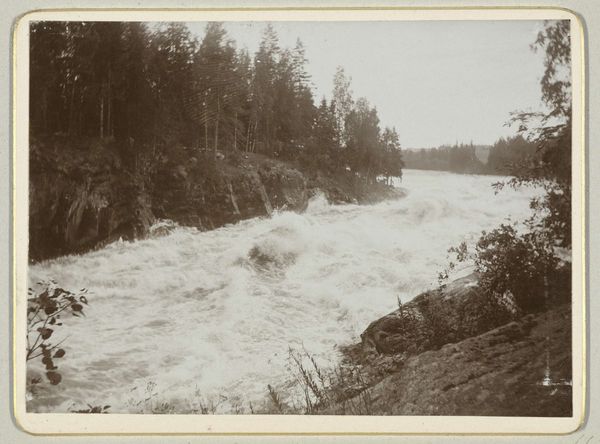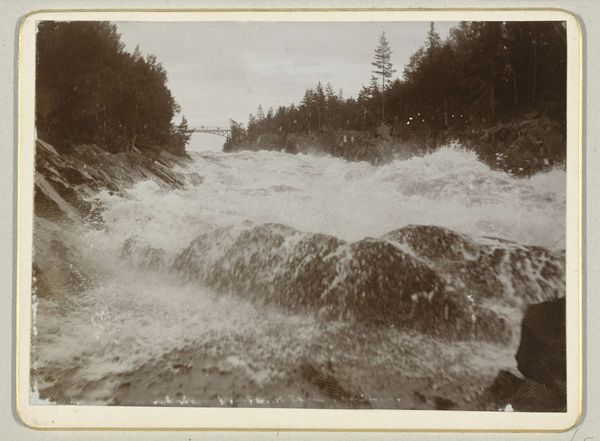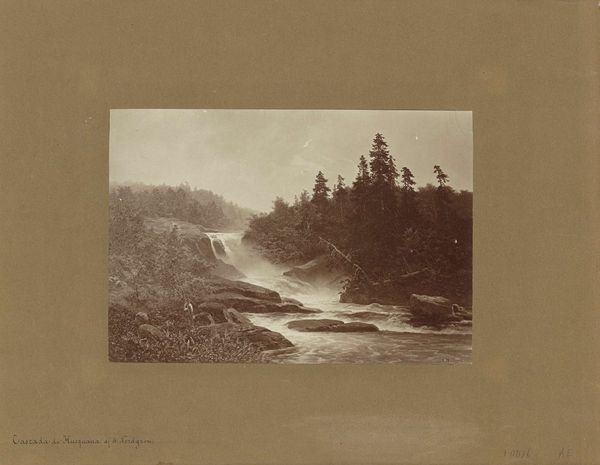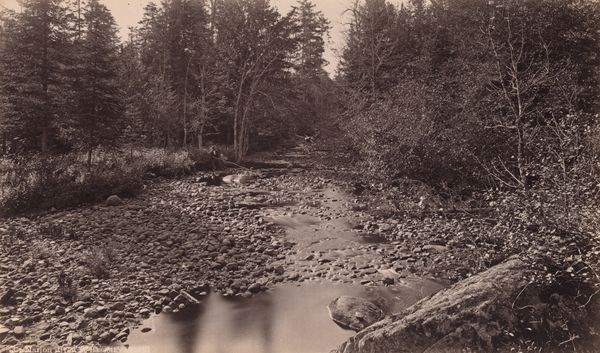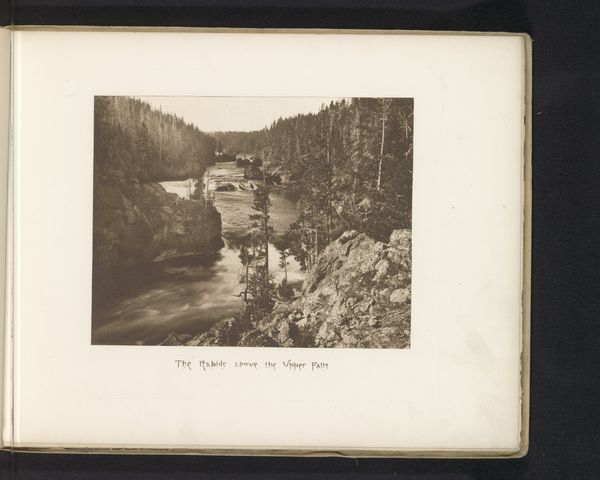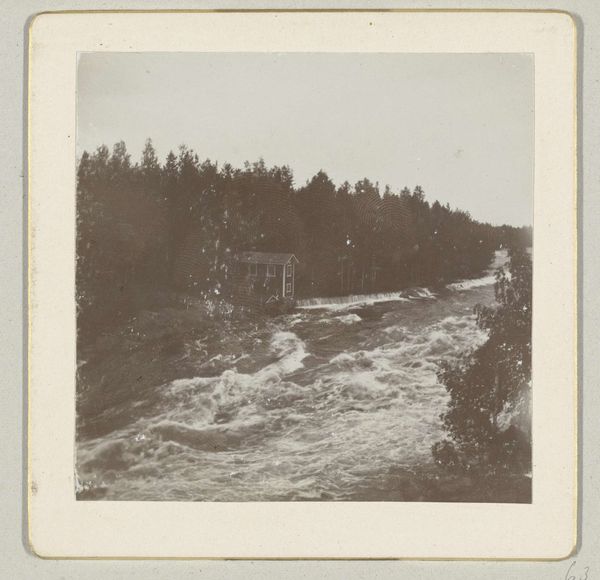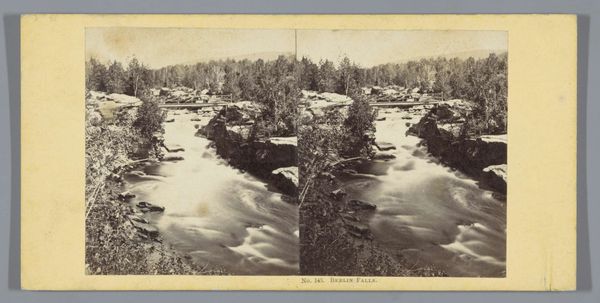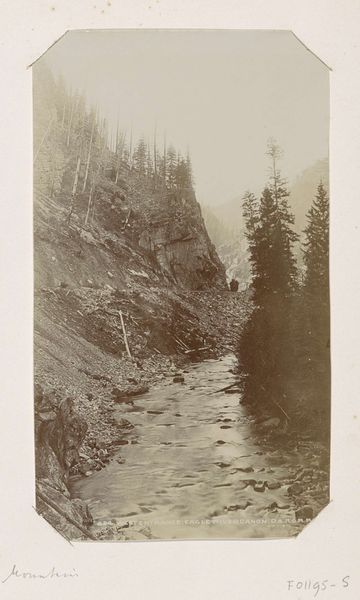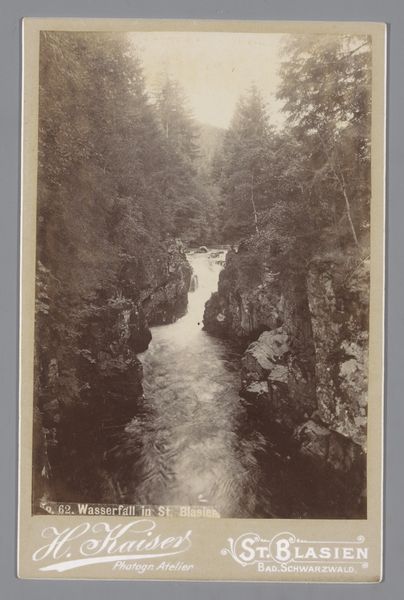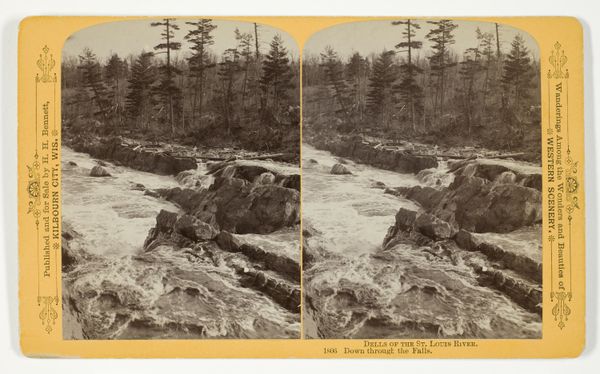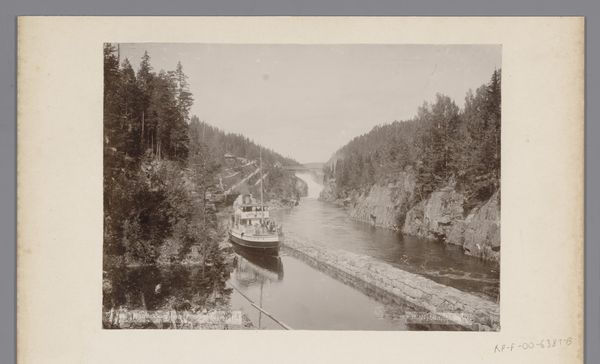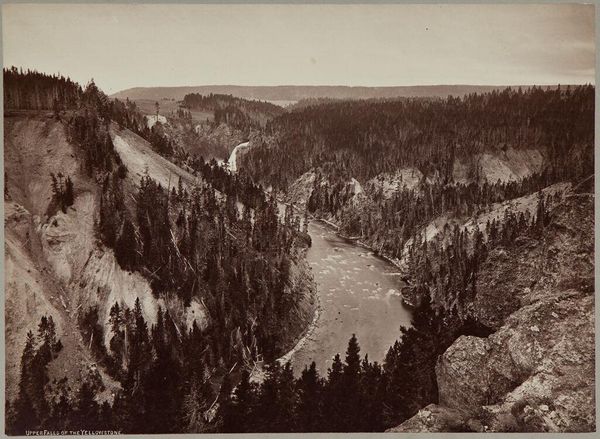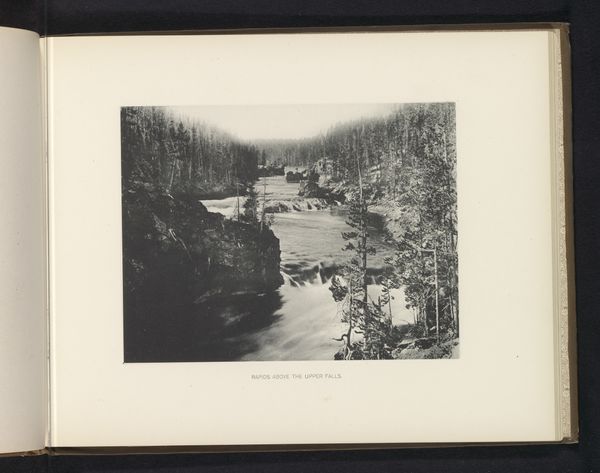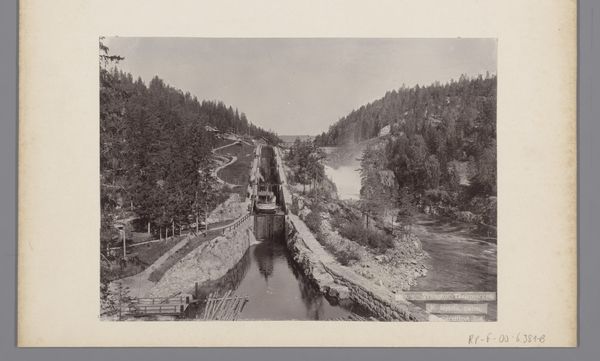
photography, gelatin-silver-print
#
pictorialism
#
landscape
#
photography
#
gelatin-silver-print
Dimensions: height 82 mm, width 120 mm, height 259 mm, width 365 mm
Copyright: Rijks Museum: Open Domain
Curator: What we’re looking at is titled “Stroomversnelling van Imatra in Finland”, or “Rapids of Imatra in Finland,” created in 1898 by Henry Pauw van Wieldrecht. It’s a gelatin-silver print currently held in the Rijksmuseum. The scene depicts rushing water between rocky banks with what looks like a bridge spanning across in the background. There’s a dynamic, almost violent energy to it. What are your initial thoughts? Editor: It certainly has an impressive, almost romantic feel to it, with the wild water and the imposing landscape. How would you interpret it? Curator: For me, a materialist perspective emphasizes the crucial relationship between this image, photographic technology, and industrialisation at the turn of the century. Consider the resources needed: silver for the gelatin print, the industrial processes for manufacturing the paper and camera itself, not to mention the labour to extract raw materials and assemble everything. This scene, arguably untouched wilderness, becomes an object of consumption, captured and disseminated through these industrial means. Doesn't the very act of capturing it alter our understanding of it? Editor: So, you're saying the photograph itself isn't just a depiction of nature, but evidence of a larger economic system exploiting it? Curator: Exactly. The Pictorialist style might try to soften the image, presenting a romanticized view. However, the material realities of the photographic process itself are inextricably tied to production and distribution networks. The bridge hints at human encroachment, yet the image seeks beauty. Is it masking the impact? Is this even meant as a work of fine art, or merely documentation that becomes co-opted as “art?” Editor: That's a really interesting point. I hadn't thought about it that way before, but it makes perfect sense considering when this was made. It forces us to consider the real-world cost of such beautiful scenes. Curator: Right, considering it not just as a photograph of the landscape, but as a manufactured object. The availability of the image allows a viewer who may never have experienced Finland to enjoy its beauty and imagine what that power felt like up close. A key consideration. Editor: I’ll never see landscape photography the same way. Curator: It’s important to contextualize the means of production with the image’s supposed purity.
Comments
No comments
Be the first to comment and join the conversation on the ultimate creative platform.
